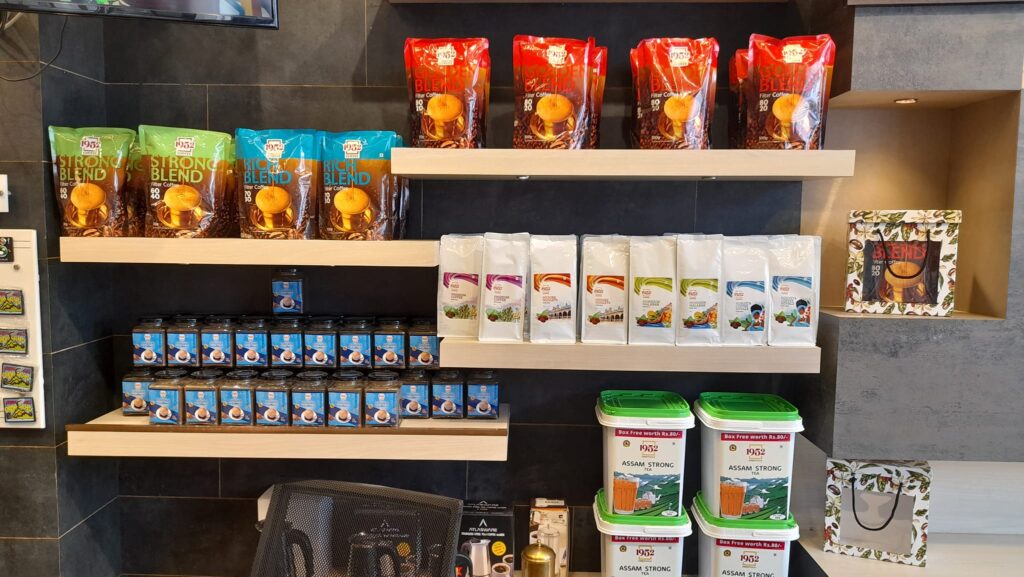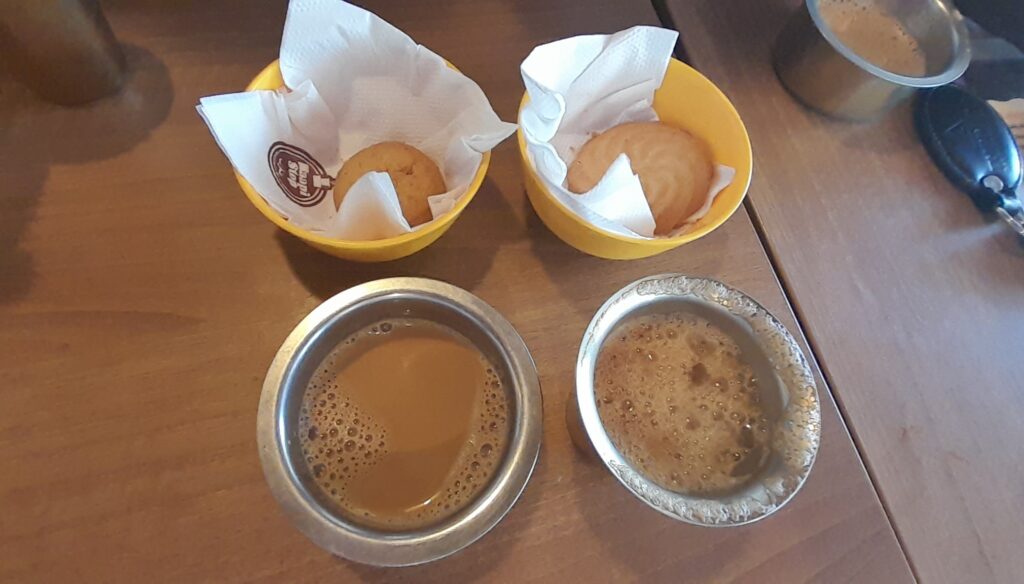Tea Consumption: Becoming Young India’s Favourite too !

Rising Consumption and global demand have been enabling the growth of
the Indian Tea Industry
By- BK Jha for Tea & Coffee Trade Media
The Indian Tea industry has been significantly contributing to the economic growth of
the country. Increasing domestic, as well as overseas consumption, has triggered the
growth of industry and exports have a major share in it. Interestingly, Coffee, which was
a drink for just a small minority during the British period and even the post-
independence era, has now been registering a higher consumption growth compared to
tea. However, demand for green gold, as tea is usually referred to, has remained
consistent as tea is being consumed in over 90% of households as an integral part of
the daily routine. Tea is now getting tough competition from the coffee-the alternative
hot beverage in India- which has found popularity among the nation’s youth population
owing to mushrooming of coffee bars and organized cafe outlets. Overall, India is
witnessing the expansion of cafe and lounge culture where both tea and coffee have
become favourites of young India. ‘Chai par Charcha’ (Discussion over a Cuppa of Tea)
has become a common trend among students and professionals across the country.
Green Gold: Gaining Ground
Tea was introduced to India by the Britishers in the 19th century to counteract the
monopoly of Chinese production and was the preferred beverage of millions of Indians.
India has been one of the world’s biggest producers of tea ever since the first
plantations were established in the 1850s in the Himalayan foothills near Darjeeling.
Eastern India had more than 50 firms growing tea by 1860, and by 1928 it was the
world’s largest producer. Additionally, this resulted in a rise in domestic consumption. By
the end of the 1920s, the Indian market had increased from 10 million pounds in 1905 to
50 million pounds. Historically, more than 60% of India’s overall tea market was made
up of loose tea consumers. However, with increased branding activities by tea
companies, the number of choices available for consumers and consistently better
quality of the packet tea, the demand for packet tea has witnessed a rising trend over
the years.
The tea products can be generically divided into green tea, orthodox tea, and crush,
tear, and curl (CTC) tea. In India, most tea plantations are found in the rural highlands
and underdeveloped areas of the Northern, Eastern, and Southern states. Additionally,
some tea varietals, like Darjeeling tea, are solely grown in India and are in high demand
all over the world. Tea is traded and bought in India through private sales and auctions.
In six important cities—Calcutta, Guwahati, Siliguri, Cochin, Coonoor, and
Coimbatore—the majority of tea trading is done through auctions.
The Indian tea industry is one of the biggest in the world, employing over 20 lakh people
throughout over 13,000 estates. The Indian tea business contributes significantly to the
country’s foreign exchange earnings and substantial tax revenues. The reputation of
Indian tea as one of the greatest in the world is a result of its strong regional indicators,
major investments in tea processing facilities, continual innovations, expanded product
mix, and strategic market expansion.
According to Tea Board, India is one of the top tea-consuming countries in the world,
with domestic consumers accounting for 80% of the country’s tea production. Assam
and West Bengal make up the majority of the output in the northern region of India,
which will produce 83% of the nation’s annual tea in 2022, as per the official estimates.
Tamil Nadu, Kerala, and Karnataka are the top three tea-producing states in India,
accounting for the remaining 17% of the country’s total tea production. Overall, 1,344.4
million kg of tea was produced in India in FY 2021-22, as per Tea Board data.
Black Tea Dominates Exports
With 10% of global exports, India is one of the world’s top 5 tea exporting countries.
India’s tea exports were worth US$ 750.63 million in FY 2021–22. Approximately 96% of
all tea exports from India are black tea, making it the most popular kind. Regular tea,
green tea, herbal tea, masala tea, and lemon tea are further export variants. About
80%, 16%, and 3.5% of India’s total tea exports are black tea, normal tea, and green
tea, respectively. India, the second-largest producer of tea in the world, retains a
dominant position in the international export market. Among the leading nations
importing tea from India are China, Germany, the US, the UK, Russia, Iran, and the
United Arab Emirates. According to the Tea Board, India exported tea worth US$61.48
million to these nations in the first quarter of FY 2022–23.
New Trends
The emergence of globalization has resulted in more refined consumer tastes and
choices. As the range of goods accessible increased as a result of the removal of
international barriers, customers have begun to demand innovation and diversity in all
areas. Customers’ taste for upscale and sophisticated tea products clearly increased as
a result of globalization and the Internet serving as the primary drivers of creating new
tea trends. Thanks to expanding e-commerce and lowered international restrictions, a
tea enthusiast can now access a variety of teas. Physical stores had to close because
of the pandemic, while internet sales rose significantly. During the pandemic, a number
of direct-to-consumer (D2C) tea businesses emerged, and their “online-only” business
models experienced rapid expansion.
Road Ahead
The broad consumption of tea in India across all socioeconomic strata is the industry’s
main driving force. The industry’s expansion is also being accelerated by the quick
economic development of the nation and the rising middle-class disposable income.
The rapid growth of the Indian tea industry is also being aided by the increase in
demand for packaged tea in urban and rural areas, where there is less risk of
adulteration and easier storage.
The expansion of cafes and lounges offering a variety of beverages is expected to fuel
the tea industry’s growth over the next years. The industry’s distribution networks, which
include neighbourhood “Kirana” stores, hyper, and supermarkets, will also help it
flourish. Because of busier lifestyles and a growing labour force, the ready-to-deliver
(RTD) market has the potential to grow favourably as consumers especially tech-savvy
youth look for more convenient foods and drinks. Future market growth will also be
fueled by an increase in packaging and flavour improvements.
To Subscribe your copy of Tea & Coffee Trade Media (Paper Back Format), Call +91 9549404000
Recent Posts
- Tea & Coffee Trade Media releases its First Issue
- World of Coffee from Chikmagalur aims to make every Indian a coffee lover
- Follow the Quality Mantra at each step of the Production of the Green Gold- Prabhat Bezboruah
- Coffee: Craze, Culture, and Competition
- Tea Consumption: Becoming Young India’s Favourite too !
Recent Comments

Tea & Coffee Trade Media releases its First Issue

World of Coffee from Chikmagalur aims to make every Indian a coffee lover

Follow the Quality Mantra at each step of the Production of the Green Gold- Prabhat Bezboruah

Coffee: Craze, Culture, and Competition

Tea & Coffee Trade Media releases its First Issue

World of Coffee from Chikmagalur aims to make every Indian a coffee lover

Follow the Quality Mantra at each step of the Production of the Green Gold- Prabhat Bezboruah

